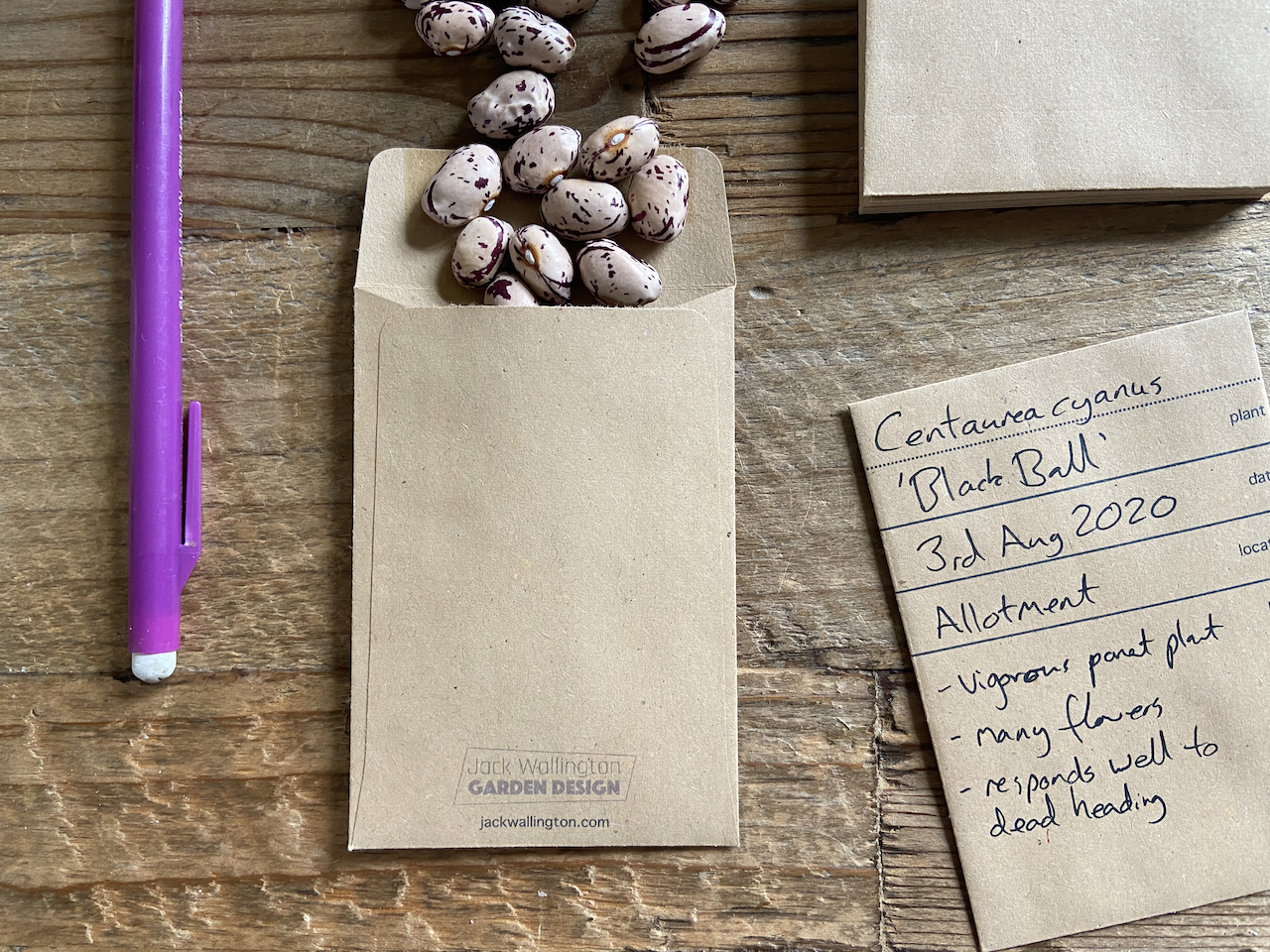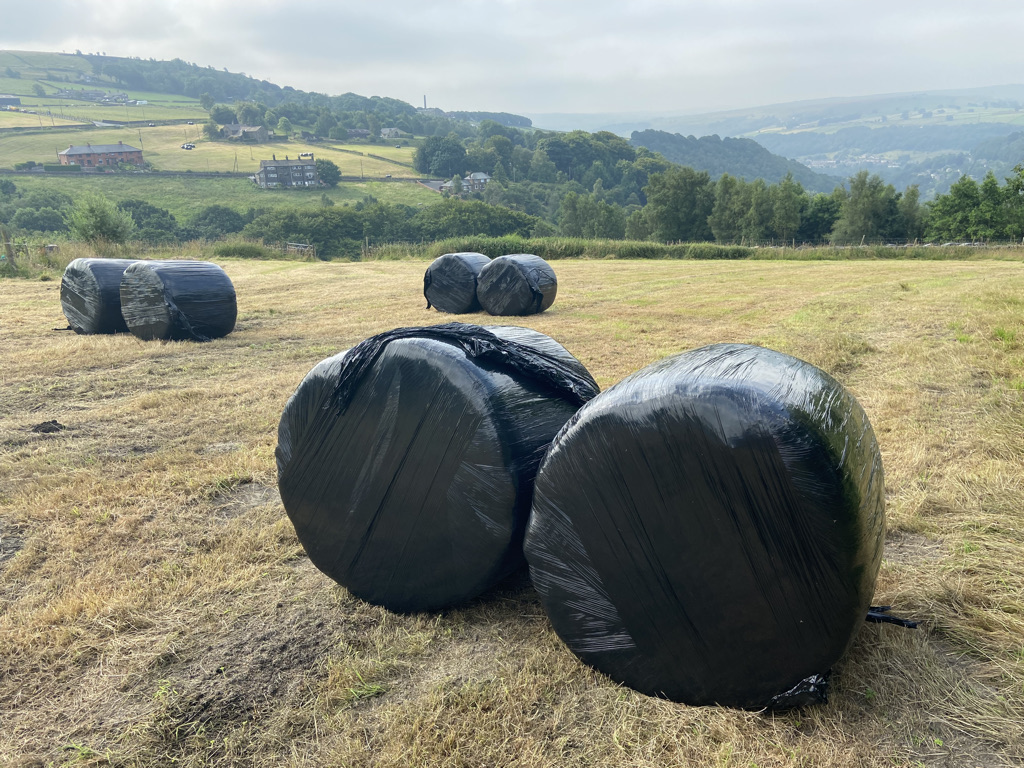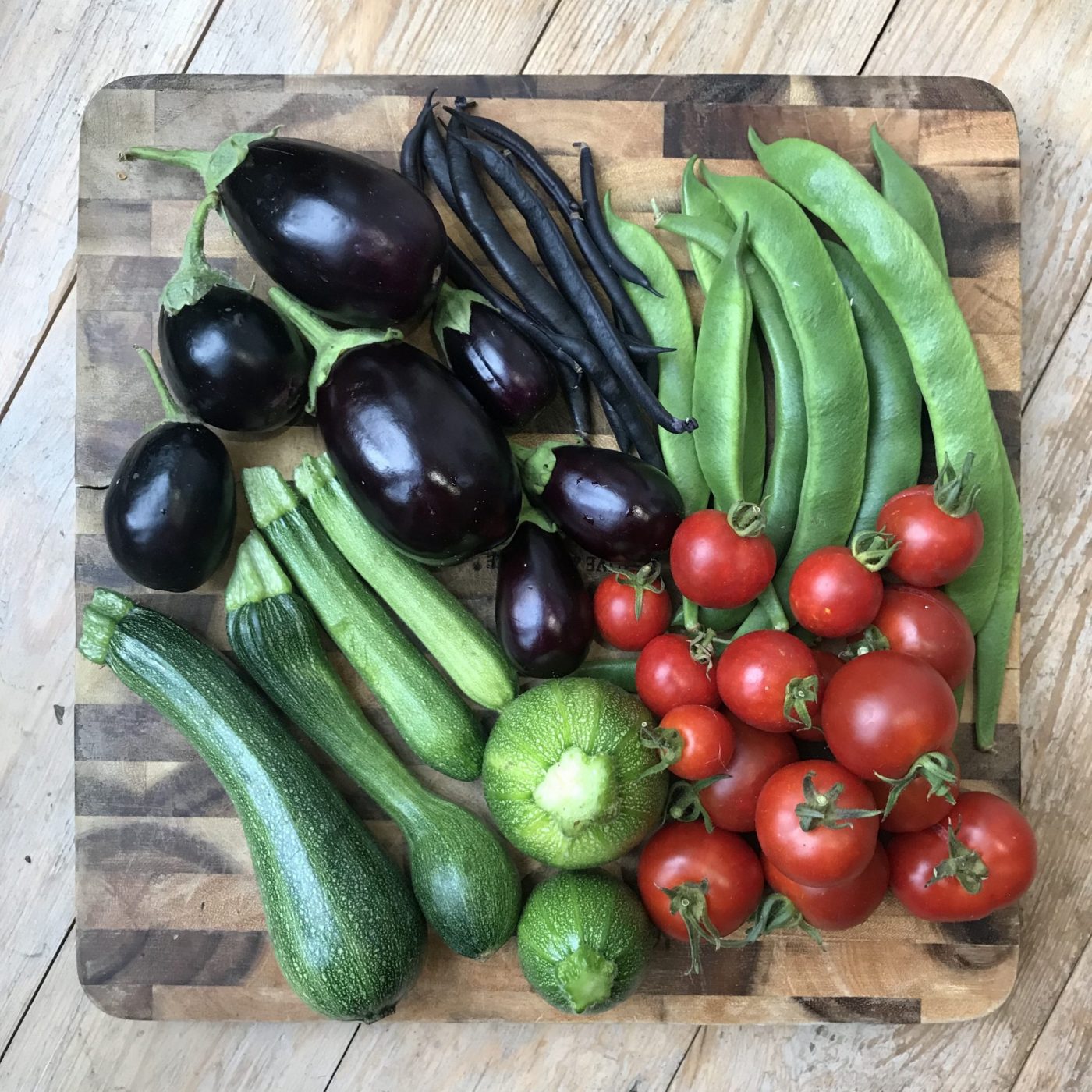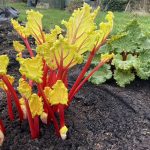Late-July and August will always be ‘real summer’ to me, with the hottest heatwaves, the driest soils and lingering hot nights. Hoes at the ready people because it’s the best time to keep those veg patches looking neat, and there are some key things that must be done now, but mostly, it’s the time for enjoying crops and flowers over a cool drink with friends watching the sunset.
Think seeds

- Collect seeds: from earlier flowers that are starting to ripen and turn brown. I’ve been collecting the seeds from foxgloves, poppies, peas and many other spring to early summer flowers that have now finished. Save those for next year in paper seed packets (available here from my shop) and scatter others around where you’d like them.
- Scatter ripe seeds: with some of the seeds I’ve been collecting, I’ve been scattering them straight away in a different location. Aquilegia, poppies and cow parsley (Anthriscus sylvestris).
- Biennials: this is kinda covered in the above points, but if you hadn’t guessed, now is the time to sow or scatter biennial seeds like wallflowers and honesty (and cow parsley, foxgloves). If you are growing some in your garden, you’ll see the seeds are ripe so the sowing at this point is simply following their natural growth pattern (a wild way understanding!)
- Remove seed heads you don’t want: look out for plants setting seed that you don’t want. Things like dandelions and dock. Cut the seed heads off carefully being sure to not let the seeds escape – you could cover with a bag first to contain and collect them. Then burn or bin them to reduce numbers of these unwanted plants.
Deadheading

- Remove spent flowers: related to seed production, by cutting off the flowers from certain plants, you can encourage them to grow more flowers in their bid to reproduce. This doesn’t work for all plants and sometimes it can be better to leave the seed head for structure while other plants, like roses that flower once per year can form red rosehips, which can be pretty. If you know your plant will continue flower production, chop away removing the stem down to the next shoots for tidiness. Plants that respond well to deadheading are dahlias, zinnia, cosmos, centaurea, ox-eye daisy, repeat flowering roses, sweet peas, buddleia, helenium and many more. Some plants that respond well fire their shoots up from the base rather than branches, like astrantia and some sanguisorbas – cut their spent flower shoots at the base. Research your plant carefully online before cutting to be sure! You can’t stick it back on.
Pruning

- Apples and pears: it’s important in later summer (the end of August or early September) to prune apples and pears to restrict size and vigour. First remove excess fruit aiming for one piece every 10cm or so. Second, cut back any new shoots to less than 20cm (the length of your secateurs). This is the summer part to winter pruning these fruit trees. Winter pruning is about shaping and encouraging growth, summer pruning to restrict vigorous new growth.
- Stone fruit: cherries, plum, apricot and peach buck the trend of pruning while dormant because they should be pruned in the hot dry weather of mid-summer to avoid infection getting into wounds that take a long time to heal on these trees. It makes them very vulnerable to silver leaf. Make as few cuts as you can, working on structure to ensure they are open with no crossing branches.
- Hedges: bird nesting season is largely over and it can soon be safe to cut hedges back but still check at this time of year just incase. It’s an offence to disturb a nesting bird, not just a bad thing to do. If the coast is clear – it can be best to wait until later in the month if you’re unsure – clip back now putting cuttings on the compost heap. You may need to give a final trim before winter depending on your location.
- Prune lavender: immediately after flowering to remove spent blooms and for some new growth to mature before winter. Cutting now is the secret to compact plants. Don’t leave it! This said, I favour the look of scraggily Mediterranean herbs rather than always blobbing them. Consider what look you are going for, you don’t always have to blob plants.
- Rambling roses: take out a third of stems to the ground, taking the oldest now, shred and compost. New shoots will grow and will need tying up at first until they’re climbing. Wear gloves and beware of their nasty evil thorns.
- Wisteria: cut the whip like shoots back to about 5 – 6 leaves from the branch they’re growing from. This restricts the plant’s vigour and size. This is followed by a second pruning in winter when dormant to shape and reduce further.
Meadows

- Mow: meadows should generally be cut in mid-August when the weather is hot and dry over an extended number of days. Remove all cuttings and compost or give away to farmers if they want it. Sow seeds of parasitic plants like yellow rattle and eyebright now if you don’t already have them.
Edibles

- Start of August: this is the time to sow the final crops of certain plants for an outside crop this season including:
- Carrots, turnip, kohlrabi, radish, perpetual spinach and lettuce.
- Anytime in August:
- Herbs: basil, parsley – anything you’d like to grow in pots, and then move them indoors as the weather gets colder in September depending on your area.
- Salads: start sowing hardy crops for winter toward the end of the month to give them a chance to bulk up, they will need cover in winter so plan carefully where you plant them, or sow into pots or trays if you’re still not sure. Kale, mustard, rocket and pak choi, plus chicory.
- Hardy outdoor crops: chard, beetroot and winter purslane. Sow hardy winter cabbages and kale in modules or small pots now to plant out later in August or in early September, they’re then tough enough to survive winter outside in the ground.
- Store excess crops: freeze fruits and some veg that can be stored this way. The veg will need to be boiled for a few minutes and cooling first (called parboiling), such as green beans, peas and other crops – look in shops to see which veg can be frozen in this way. Make jams and chutneys now – your winter self will thank you greatly!
- Strawberry runners: strawberry plants will be producing rooting runners left right and centre now, plant these in a new spot where you’d like to grow them, or grow in 9cm pots for now ready to plant out later. It’s good to move strawberries around every year or two to keep growth vigorous.
Do now

- Spring bulbs: start browsing through spring bulb catalogues to get your order in soon, they’ll be planted in late September or October – time your order carefully as you don’t want to receive them too soon, but you also don’t want to miss out on the rarest bulbs. This always feels a totally incongruous time to be thinking about spring and I have to muster the effort to do it. As the years go on I try to grow only perennial bulbs that I know will increase in number naturally in the garden I’m planting them into. Anything throwaway like overly fancy tulips I won’t bother with.
- Take cuttings: now is the perfect time to take some cuttings of plants like salvias, rosemary, sage, thyme, succulents and other shrubs. The weather is warm and bright giving them the best chance of forming roots and new growth before we start closing in on autumn next month… next month, blimey that’s come around fast, let’s not think about it!



